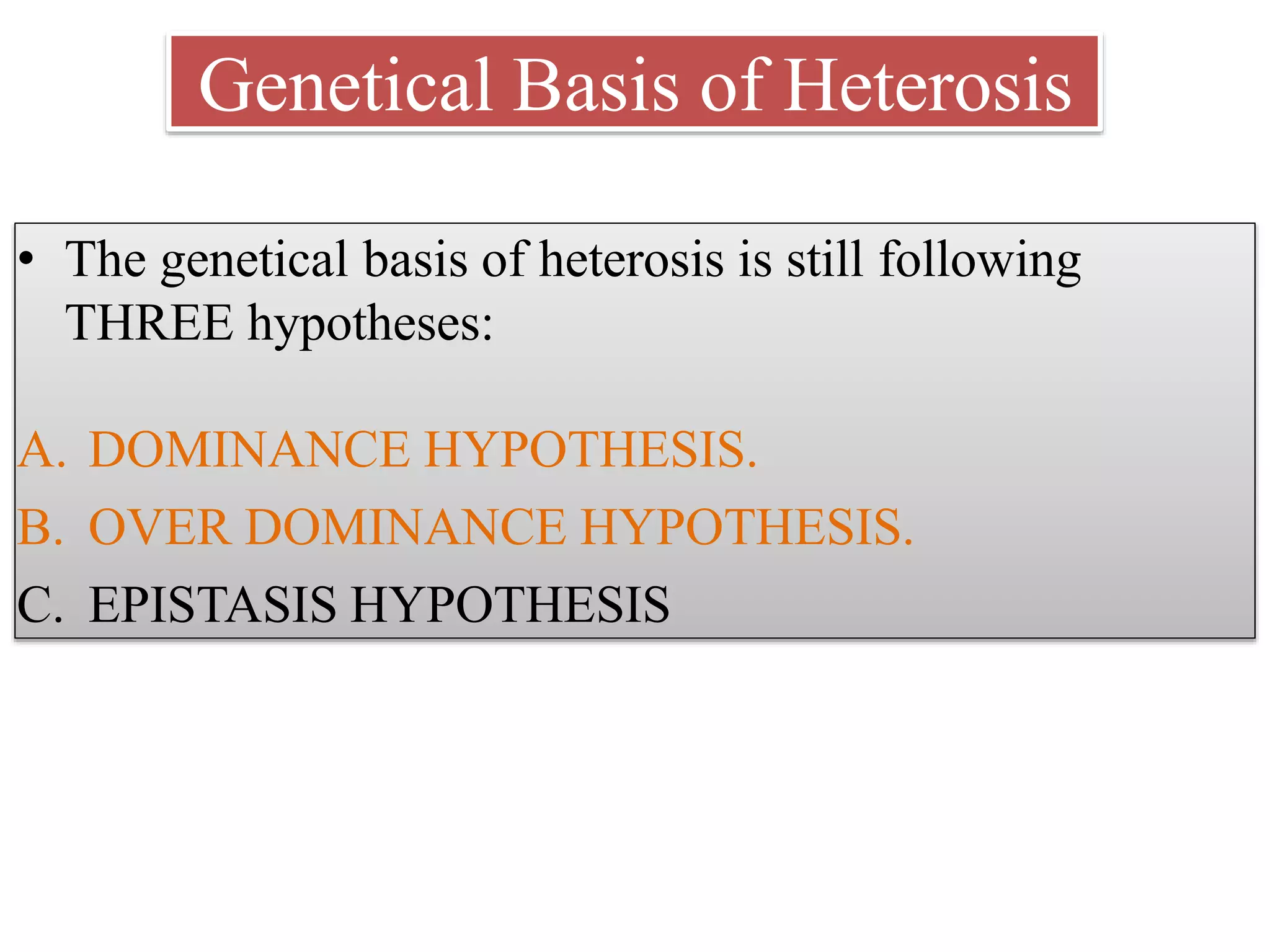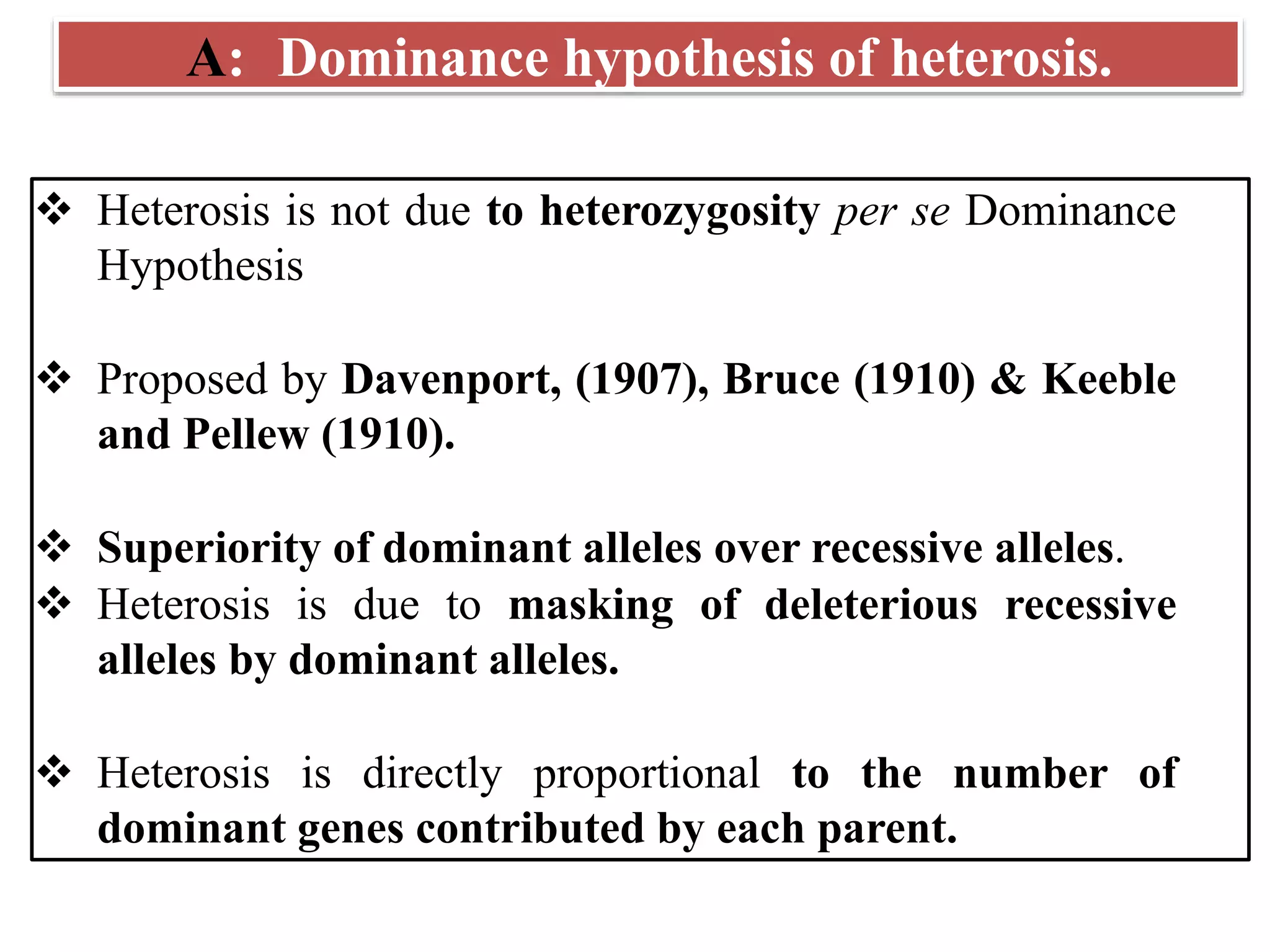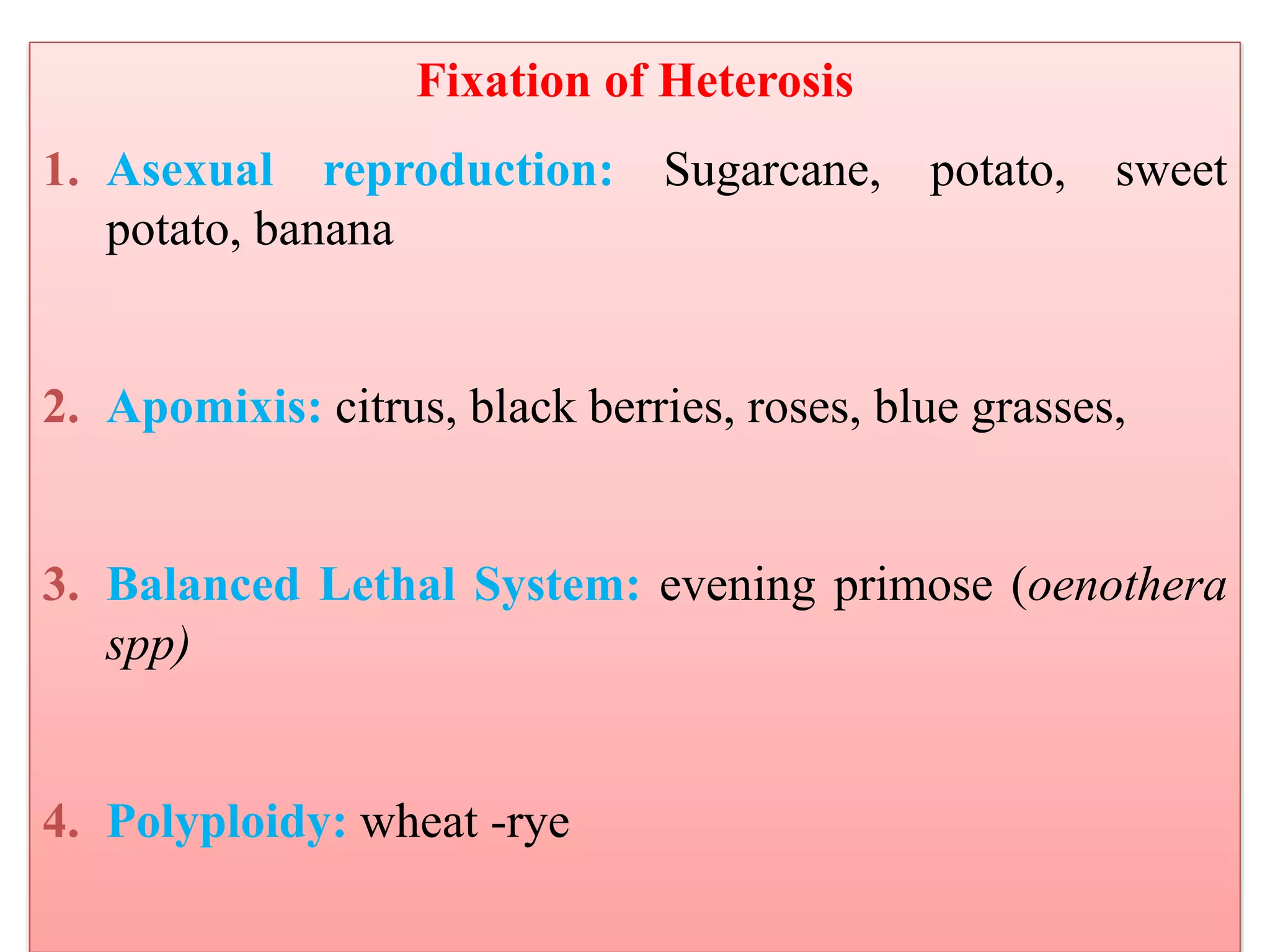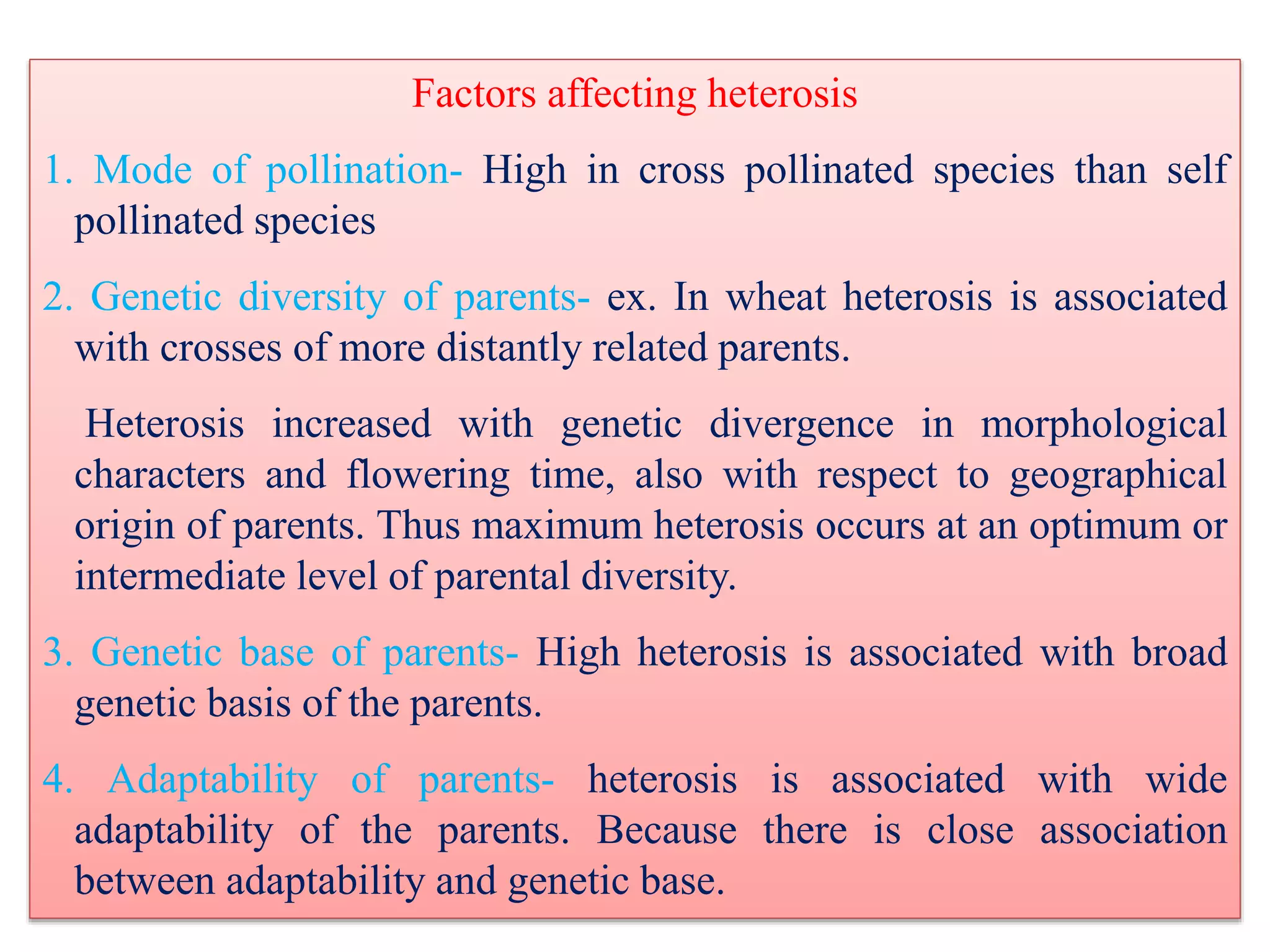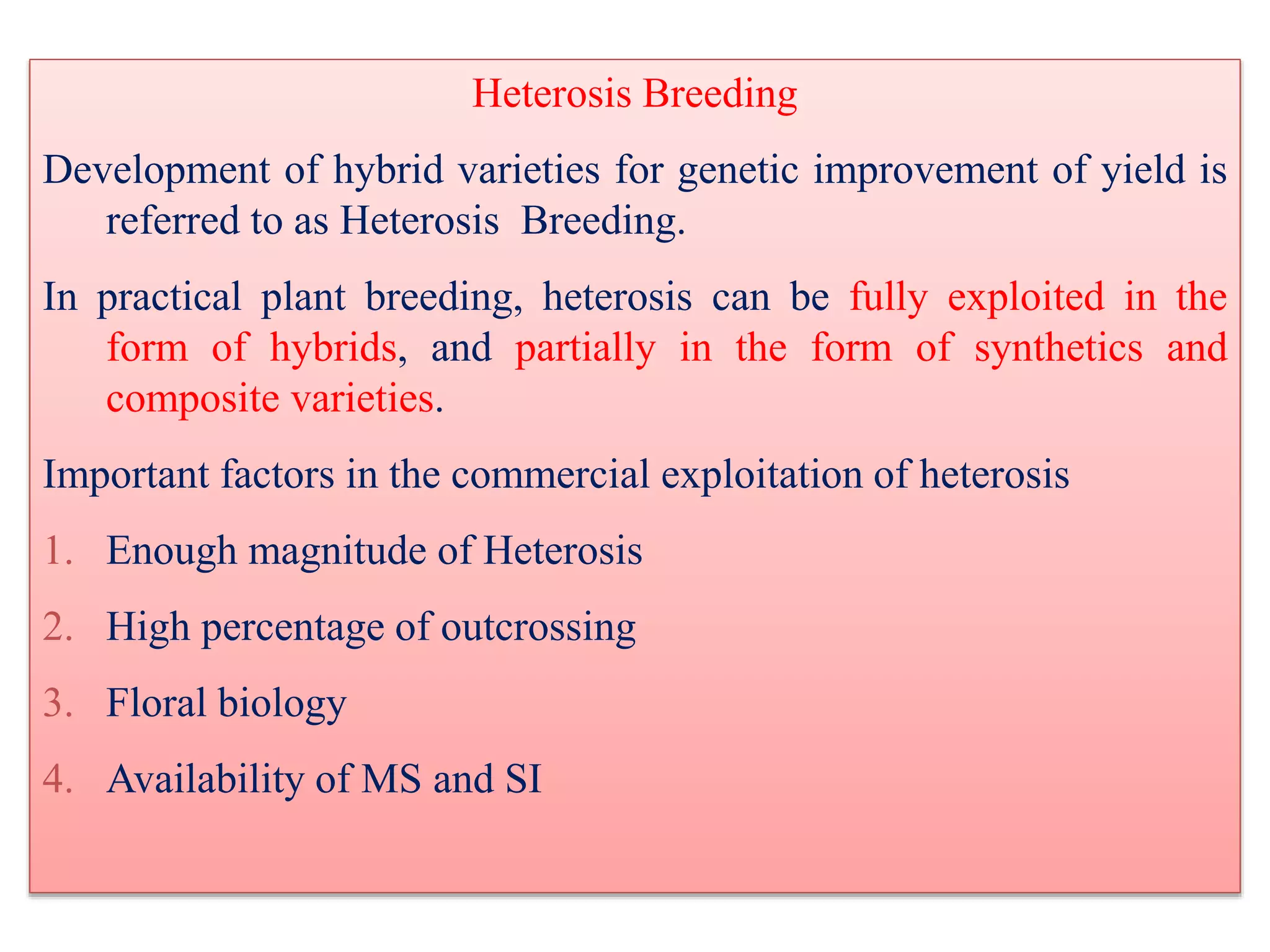This document discusses the concept of heterosis, also known as hybrid vigor. It defines heterosis as the superiority of F1 hybrids over their parents in traits like yield, vigor and adaptation. The document then discusses the history of heterosis research and different hypotheses for the genetic basis of heterosis, including dominance, overdominance and epistasis. It also covers types of heterosis estimates and how heterosis is manifested. Factors affecting heterosis and various methods for heterosis breeding in crops are outlined.








![Estimation of Heterosis
1. Average heterosis: It is the heterosis where F1 is superior to mid
parent value. In other words superior to average of two parents.
Average Heterosis= [(F1 – MP)/MP] x 100
Where, F1 = Mean of hybrid
MP = Mid parental value.
(P1 + P2) where P1 = Parent 1 and P2 = Parent 2
This type of heterosis is of no use in agriculture since the
superiority is below the better parent value](https://image.slidesharecdn.com/17heterosisbreeding-210728104044/75/17-Heterosis-breeding-9-2048.jpg)
![2. Heterobeltiosis:
When the heterosis is over the superior or better parent or Superiority of F1 over
the better parent.
Heterobeltiosis= [(F1 – BP)/BP] x 100
Where, BP = Mean value (over replications) of the Better Parent of the particular
cross
3. Economic Heterosis/ Useful Heterosis:
Superiority of the F1 compared to the high yielding commercial check variety in
a particular crop.
Useful Heterosis= [(F1-CC) / CC] x 100
Where, CC = Mean of Commercial check variety.
It is estimated in those crops where hybrids are already available for
comparison. This type of heterosis is of practical value in plant breeding.
4. Negative heterosis:
Performance of F1 inferior to better parent / mid parent value. - e.g. Duration.](https://image.slidesharecdn.com/17heterosisbreeding-210728104044/75/17-Heterosis-breeding-10-2048.jpg)
